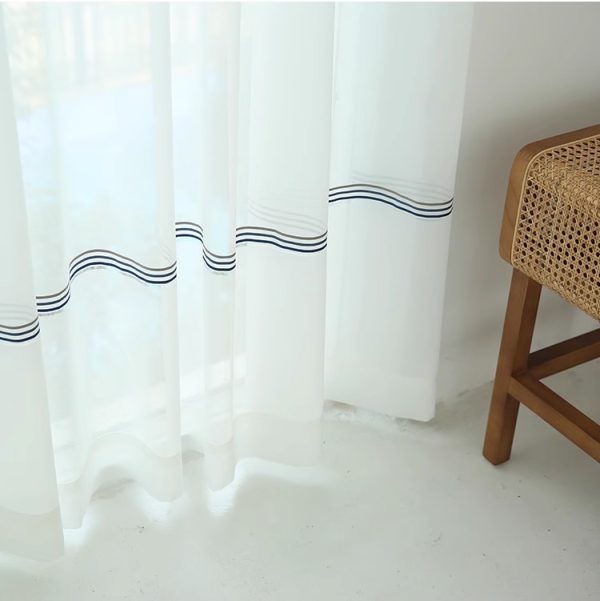Layering window treatments is one of the most sophisticated techniques in interior design, allowing you to combine functionality with visual appeal. When done correctly, layered treatments provide maximum flexibility for light control, privacy, and style while creating depth and richness that single treatments simply cannot achieve.
Why Layer Window Treatments?
Layering offers numerous advantages that make it worth the extra investment and planning:
- Enhanced functionality: Different treatments serve different purposes throughout the day
- Improved insulation: Multiple layers provide better temperature control
- Flexible light control: Fine-tune the amount of light entering your space
- Visual depth: Creates a more sophisticated, designer look
- Seasonal adaptability: Adjust layers based on changing needs
- Sound dampening: Multiple fabric layers help reduce outside noise
The Foundation: Understanding Layer Functions
Successful layering requires understanding what each layer contributes:
Base Layer (Closest to Window)
- Purpose: Primary light control and privacy
- Options: Blinds, shades, or shutters
- Characteristics: Functional, adjustable, often neutral
Middle Layer (Optional)
- Purpose: Additional insulation or light filtering
- Options: Sheer curtains or light-filtering panels
- Characteristics: Translucent, soft, adds texture
Top Layer (Furthest from Window)
- Purpose: Style, color, pattern, and final light control
- Options: Decorative curtains or drapes
- Characteristics: Aesthetic focus, can be bold or subtle
Classic Layering Combinations
Blinds + Curtains
The most popular and versatile combination:
- Base: Wood, faux wood, or aluminum blinds for precise light control
- Top: Fabric curtains for softness and style
- Benefits: Complete privacy when needed, decorative appeal
- Best for: Living rooms, bedrooms, dining rooms
Cellular Shades + Sheers
Perfect for energy efficiency and gentle light:
- Base: Cellular shades for insulation and privacy
- Top: Sheer curtains for softness and diffused light
- Benefits: Energy savings, gentle light filtering
- Best for: Bedrooms, home offices, family rooms
Roman Shades + Panels
Tailored and sophisticated:
- Base: Roman shades for structured light control
- Top: Side panels for framing and elegance
- Benefits: Clean lines, customizable fabrics
- Best for: Formal dining rooms, master bedrooms
"The key to successful layering is ensuring each layer serves a purpose. Never add a layer just for decoration – it should contribute to the overall function of the window treatment." - Professional Interior Designer
Hardware Considerations
Proper hardware is crucial for successful layering:
Double Rod Systems
- Front rod for decorative curtains
- Back rod for sheers or functional panels
- Ensure adequate clearance between rods
- Choose coordinating finishes
Mounting Depth
- Inside mount: Requires sufficient window frame depth
- Outside mount: Allows more flexibility for layering
- Consider projection needs for each layer
- Account for window trim and wall space
Motorization Options
- Motorize the base layer for convenience
- Keep decorative layers manual for cost savings
- Consider smart home integration
- Plan for power sources and controls
Color and Pattern Coordination
Successful layering requires thoughtful color and pattern planning:
Monochromatic Approach
- Use different shades of the same color family
- Vary textures to add interest
- Creates a cohesive, sophisticated look
- Safe choice for beginners
Neutral Base with Color Accent
- Keep functional layers neutral
- Add color through decorative top layer
- Allows for easy seasonal changes
- Most versatile approach
Pattern Mixing
- Use patterns of different scales
- Maintain a common color thread
- Limit to 2-3 patterns maximum
- Balance busy patterns with solids
Room-Specific Layering Strategies
Living Room Layering
- Goal: Flexibility for entertaining and relaxation
- Combination: Wood blinds + linen curtains
- Features: Easy operation, style coordination with furniture
Bedroom Layering
- Goal: Complete darkness for sleep, gentle morning light
- Combination: Blackout cellular shades + decorative panels
- Features: Room darkening, sound reduction, privacy
Kitchen Layering
- Goal: Easy cleaning, moisture resistance, style
- Combination: Faux wood blinds + cafe curtains
- Features: Practical materials, easy maintenance
Home Office Layering
- Goal: Glare control, professional appearance
- Combination: Light-filtering cellular shades + side panels
- Features: Reduced screen glare, clean lines
Installation Tips for Layered Treatments
Planning Phase
- Measure carefully, accounting for all layers
- Plan hardware placement before installation
- Consider the order of installation
- Test operation before final mounting
Professional vs. DIY
- Complex layering often benefits from professional installation
- Simple combinations can be DIY projects
- Consider the cost of mistakes vs. professional fees
- Factor in time and tool requirements
Maintenance and Care
Layered treatments require coordinated maintenance:
- Regular cleaning: Each layer may have different care requirements
- Seasonal adjustments: Change layer usage based on weather
- Hardware maintenance: Keep all mechanisms operating smoothly
- Fabric protection: Rotate sun exposure to prevent fading
Budget-Friendly Layering
Create layered looks without overspending:
Phased Approach
- Start with functional base layer
- Add decorative layers over time
- Take advantage of sales for each phase
- Mix high and low-priced elements
DIY Elements
- Make simple curtain panels
- Use ready-made treatments creatively
- Repurpose existing window treatments
- Focus budget on quality hardware
Common Layering Mistakes
Avoid these frequent errors:
- Over-layering: Too many layers create visual chaos
- Poor proportion: Layers that don't work together visually
- Inadequate hardware: Insufficient support for multiple layers
- Ignoring function: Prioritizing looks over practical operation
- Mismatched styles: Combining incompatible design elements
Ready to Create Your Layered Look?
Explore our extensive collection of window treatments perfect for creating beautiful, functional layered designs.
Shop Window Treatments
Get Design Consultation
